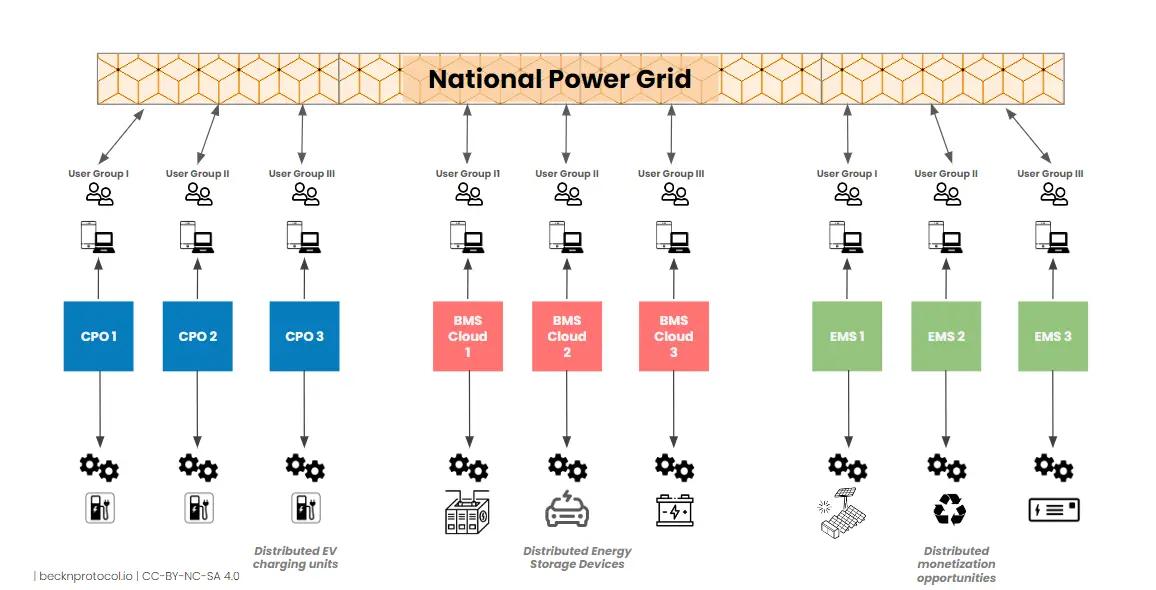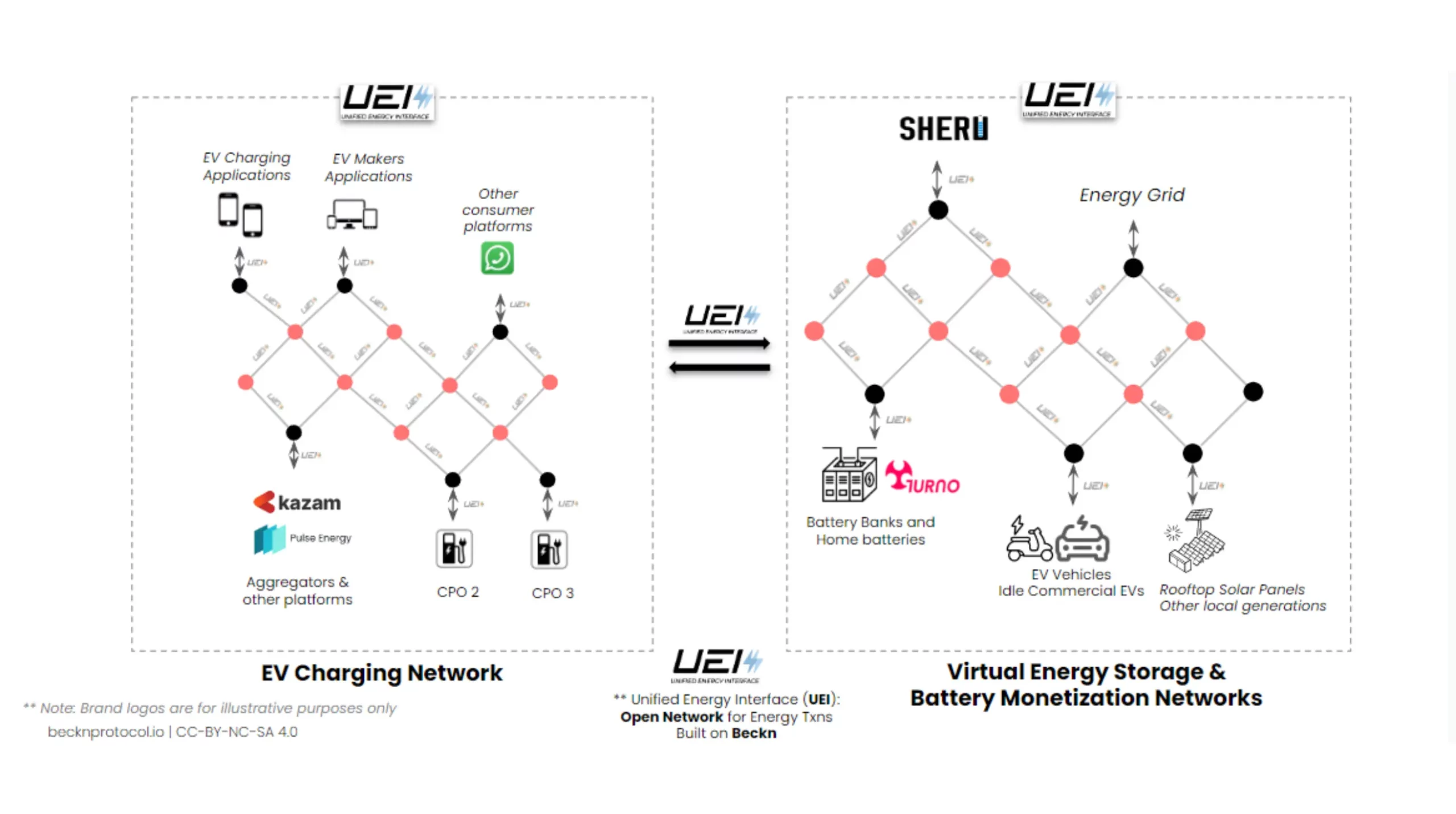imagining energy with beckn

Global Strides Towards Renewable
Energy Ascent
Evolving Energy Dynamics:
Emerging Patterns
Reflecting on the evolving energy landscape as mentioned above, the future points towards a substantial increase in energy storage solutions, diversified generation methods, and a heightened demand for EVs and related services.
Moreover, the uptake in trends of diversified energy generation will likely see an expanded set of individuals evolve from consumers to ‘prosumers’. Adoption of solar rooftops, biogas processors, and wind turbines signifies a move towards more localised and sustainable energy production methods. Such changes reflect a more active and participatory role in the energy ecosystem.
The Interoperability Challenge: Streamlining The Green Energy Ecosystem
In the vibrant landscape of a clean transition, a multitude of startups and companies are forging ahead with innovations in EV charging, energy storage, and management, each contributing to a cleaner, more sustainable future. Innovations in battery as a service, battery-to-grid, vehicle-to-grid, virtual power plants and smart demand response management are already demonstrating cost and efficiency benefits to multiple stakeholders. These initiatives reflect a genuine and effective commitment to meeting the evolving needs of the energy sector. However, a notable observation is that many of these efforts, while impactful in their own right, are often conducted in silos, operating independently. All of which then are resulting into another digital platform, targeting the same set of consumers through a new channel of distribution.
This presents an opportunity for a paradigm shift. Can we affect accelerated green energy transition by unifying this fragmented ecosystem? In the current energy marketplace, how can one ease adoption and make user and provider interactions more seamless? How can scattered energy resources be unified and discovered easily? Given the urgency of green transitions, is there a way to accelerate innovation and efforts to address the complex problem of climate action?
By embracing interoperability among these diverse platforms, we can unify the efforts to create a more accessible and inclusive ecosystem. Interoperability is not just a technical solution; it’s a catalyst for multiplying the positive impacts of each initiative. It paves the way for accelerated adoption of green technologies, enhancing access and transaction for larger user and provider groups.

Beckn for Energy: Simplifying Energy Transactions

Example 1: Simplifying EV Charging
Through UEI, an EV user can use their preferred app, whether it’s an OEM app like Volkswagen or Kia, an aggregator like ChargePoint, or even a general app like Google Maps or WhatsApp, to find all available charging options in their area. This unified system enhances discoverability for users and increases utilisation for Charging Point Operators (CPOs), creating a win-win situation.
The increased ease of finding and using charging stations leads to more investment in infrastructure, resulting in a denser network of chargers. This expansion reduces range anxiety for EV users and can initiate a positive cycle that accelerates EV adoption by aligning incentives and convenience.

Example 2: Idle to Ideal - Transforming Energy Storage
Furthermore, this approach offers asset owners, like those with batteries or EVs, an opportunity to monetize their assets. By utilising these resources during idle times, owners can reduce the overall cost of ownership. This improved storage and reuse system also contributes to reducing the cost of renewable energy, making it more affordable for daily use. The UEI thus not only optimises energy efficiency but also opens up new economic avenues in the renewable energy sector.
Early Innovation and Future of UEI
A technical demonstration in Bangalore showcased UEI’s capabilities in a real-world setting, affirming its potential for diverse implementations. Early innovators on UEI such as Kazam, Pulse Energy, Sheru, and Turno have joined hands to set up a hardware and software prototype which enables a consumer to charge their EV with cheaper green energy through UEI from their choice of Charging Point Operators (CPO). It then allows the CPO to exchange that demand note with ‘Energy storage aggregators’ present on UEI network and release green energy to the grid stored in a remote battery bank, through the interfacing energy distributor and balance off the earlier consumption.

A Sustainable and Digital Future
sources:
2. IEA Renewable Report, 2023
3. IEA Renewable Report, 2023
